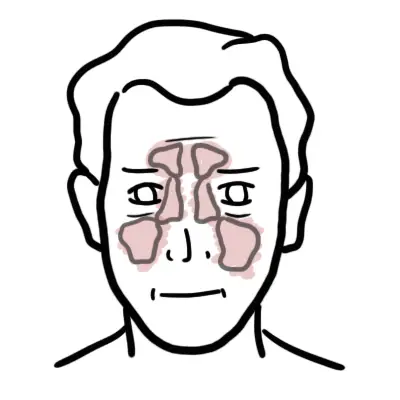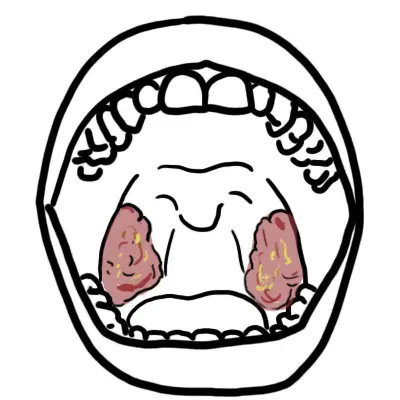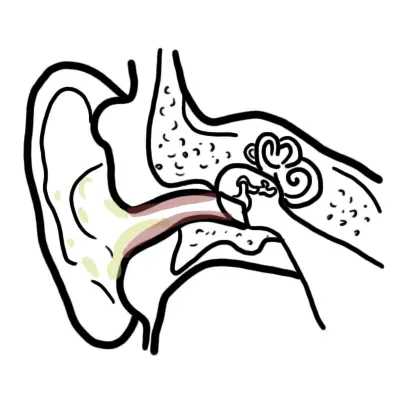Overview
Overview Rhinosinusitis is one of the more prevalent chronic illnesses worldwide, affecting individuals of all ages. It is an inflammatory process that involves the nose and paranasal sinuses. Rhinosinusitis may be acute or chronic. Chronic rhinosinusitis can be subject to acute exacerbations.
| Definition Rhinitis: Irritation and inflammation of the mucosa lining the nasal cavity Sinusitis: Inflammation of the sinuses (usually a result of rhinitis) Acute rhinosinusitis: Acute inflammatory condition of the nose and paranasal sinuses |
Sinus Anatomy
Risk Factors
- Allergy and Atopy
- Septal deviation
- Mechanical obstruction of sinus
- Tumours
- Foreign bodies
- History of chronic sinusitis
- Conditions affecting mucociliary clearence
- Cystic fibrosis
- Kartagener’s Syndrome
| Kartagener’s Syndrome also known as primary ciliary dyskinesia is a rare, ciliopathic, autosomal recessive genetic disorder that causes defects in the action of cilia lining the respiratory tract. |
Signs and Symptoms
Clinical Presentation – Acute rhinosinusitis
- Prurulent rhinorrhoea
- Nasal congestion and stuffiness
- Facial pain and/or pressure
- Hyposmia or altered taste
- Dental pain
Clinical Presentation – Chronic rhinosinusitis
- Rhinorrhoea
- Nasal congestion and stuffiness
- Post-nasal drip
- Facial pain or pressure
- Hyposmia or altered taste
- Dry or sore throat
- Halitosis
- Sneezing
- Itchy or runny eyes
- Blocked ears
- General malaise
Clinical Examination
- Nasal mucosal inflammation
- Nasal polyps
- Mucopurulent secretions
- Conchae (Turbinate) hypertrophy
- Other anatomic abnormalities (nasal septal deviation causing obstruction)
Pathophysiology
Acute rhinosinusitis
- Viral upper respiratory tract infection (common cold)
- Rhinovirus
- Mucosal oedema of nose and paranasal sinuses
- Bloackage of sinus drainage pathways
- Stasis of mucosal secretions
- Secondary bacterial infection (pyogenic organisms)
- Streptococcus pneumoniae
- Haemophilus influenzae
- Moraxella catarrhalis.
Chronic rhinosinusitis
Stasis of secretion results in cessation of bacterial export, propagating mucosal inflammation and compromising aeration of the mucosa. This in turn leads to increased ciliary dysfunction and the vicious cycle continues, resulting in CRS.
Management
Acute rhinosinusitis
- Analgesics (topical or oral)
- Decongestants (topical or oral)
- Antibiotics (penicillins)
- Surgery
Chronic rhinosinusitis
- Analgesics (topical or oral)
- Decongestants (topical or oral)
- Steroids (topical or oral
- Antihistamines
- Antibiotics (penicillins)
- Allergy testing – if allergy trigger is suspected
- Surgery
- Functional endoscopic sinus surgery (FESS)
Complications and Prognosis
Complications
Frontal sinusitis
- Osteomyelitis
- Pott’s puffy tumour
- Extradural abscess
- Subdural abscess
- Meningitis
- Frontal lobe abscess
Ethmoid sinusitis
- Periorbital cellulitis
- Orbital abscess
Maxillary sinusitis
Sphenoid sinusitis
Prognosis Acute rhinosinusitis is very common and most cases resolve without any long-term sequelae.



